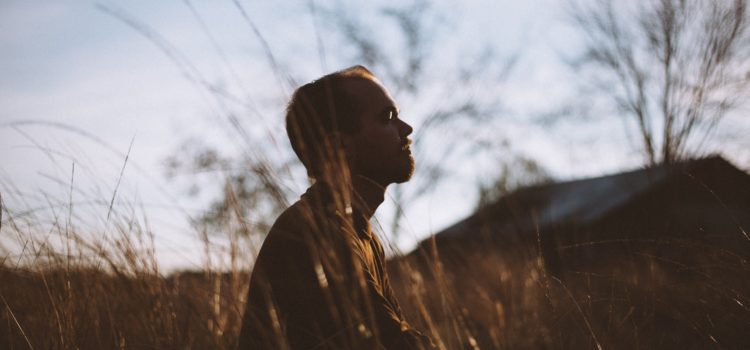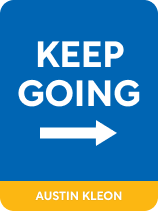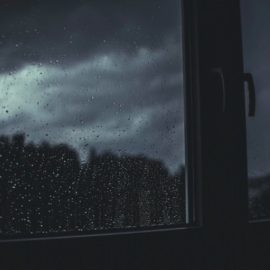

This article is an excerpt from the Shortform book guide to "Keep Going" by Austin Kleon. Shortform has the world's best summaries and analyses of books you should be reading.
Like this article? Sign up for a free trial here .
Are you constantly distracted? Do you need a place to air out your creativity?
In Keep Going, artist Austin Kleon advises disconnecting from the world to be your most creative self. To disconnect, he says to make a creative space and slow down your life.
Here’s how to disconnect from the world and connect with your inner artist.
1. Make a Creative Space
Staying in the moment and disconnecting from the world isn’t just about what you do on a given day—it’s also about where you do it. Kleon suggests you can help disconnect from the world by using a specific place for your creative work. Ideally, this space should allow you to block out external distractions and stimulate your creativity.
(Shortform note: In addition to simply having a separate creative workspace, psychological research suggests that there are many benefits of having control over the design of this space. Studies found that those who can design their own workspaces aren’t just more creative—they also tend to be happier, healthier, and more productive.)
He says the ideal creative space has two main qualities: solitary silence and creative messiness.
Solitary Silence
Your creative space should allow you to be alone in a quiet place. When you no longer have to focus on external stimulation and you’re disconnected from the world, you can focus on internal stimulation: your creative thoughts.
(Shortform note: Kleon’s suggestion for a quiet and solitary workplace doesn’t take into account that creative work is often collaborative. Spaces like television writers’ rooms, movie studios, or theatrical productions require lots of people working together rather than solo artists working by themselves. This suggests that quiet time alone isn’t always the best way to stimulate creativity.)
Creative Messiness
Kleon explains that there’s a level of messiness that’s just right for creativity: If it’s too messy, you won’t be able to find what you need for your work. On the other hand, if it’s too tidy, you can’t find creative inspiration from the various unrelated things in a messy space. When your space gets too messy and you tidy up, pay attention to everything you come across—looking through old forgotten things can inspire new ideas.
(Shortform note: Psychological research supports Kleon’s idea that a balance between messiness and tidiness is ideal—one study found that while tidiness is correlated with healthier, more generous decision making, messiness is correlated with creativity. This suggests that a “just right” approach of balancing messiness and tidiness allows you to better approach a multitude of situations.)
2. Slow Down
Kleon’s other guideline for disconnecting from the world is slowing down the rate at which you receive information. This will make it easier to focus on the present instead of thinking about what comes next.
(Shortform note: Kleon mostly talks about slowing down in terms of thought and information, but psychologists suggest that slowing down your physical actions can also reduce anxiety. A common example of this phenomenon is breathing exercises: focusing on taking slow, deep breaths to reduce anxiety.)
Kleon provides two methods for slowing down your life: exploring the mundane and limiting your news and media intake.
Explore the Mundane
You don’t need to have bizarre or unique life circumstances to create excellent art, explains Kleon. Instead, you just have to take time to look at what’s already around you—things that have become mundane or commonplace. When you take a closer look at the seemingly mundane objects, places, and things around you, you’ll gain new ideas and experiences that stimulate your creativity while also staying in the moment.
To explore the mundane, Kleon suggests that you sketch objects you see in the world or go for a walk outside and pay close attention to what you see or experience. These activities allow you to take additional time looking at things you’d otherwise ignore.
(Shortform note: While Kleon mostly talks about exploring the mundane through visual means like drawing, psychologists suggest you use all five senses to interact with the world around you—doing so actually stimulates creativity more. For instance, smell and taste strongly connect to our memories, allowing us to make creative connections. Hearing quiet ambient noise can also help inspire creativity. This research suggests that creatively connecting to the world around you should be a multi-sensory experience.)
Limit Your News and Media Intake
Disconnecting from the world. also means creating boundaries around when you interact with the news and social media. Kleon recommends dedicating a specific time of day or time of the week to reading the news and checking up on the outside world. That way, you can stay informed without needing to constantly face the overwhelming and upsetting stories commonly found in the news.
(Shortform note: In addition to managing when you read the news, psychologists suggest you can avoid feeling overwhelmed by managing how you read the news. Avoiding unnecessary graphic detail, balancing positive and negative stories, and reading the news instead of watching it can all reduce the amount of stress you feel when catching up with the outside world.)

———End of Preview———
Like what you just read? Read the rest of the world's best book summary and analysis of Austin Kleon's "Keep Going" at Shortform .
Here's what you'll find in our full Keep Going summary :
- How to stay creative even when you feel stressed or burnt out
- Why the process of making art is more important than the outcome
- Why and how to make a creative space to work in






